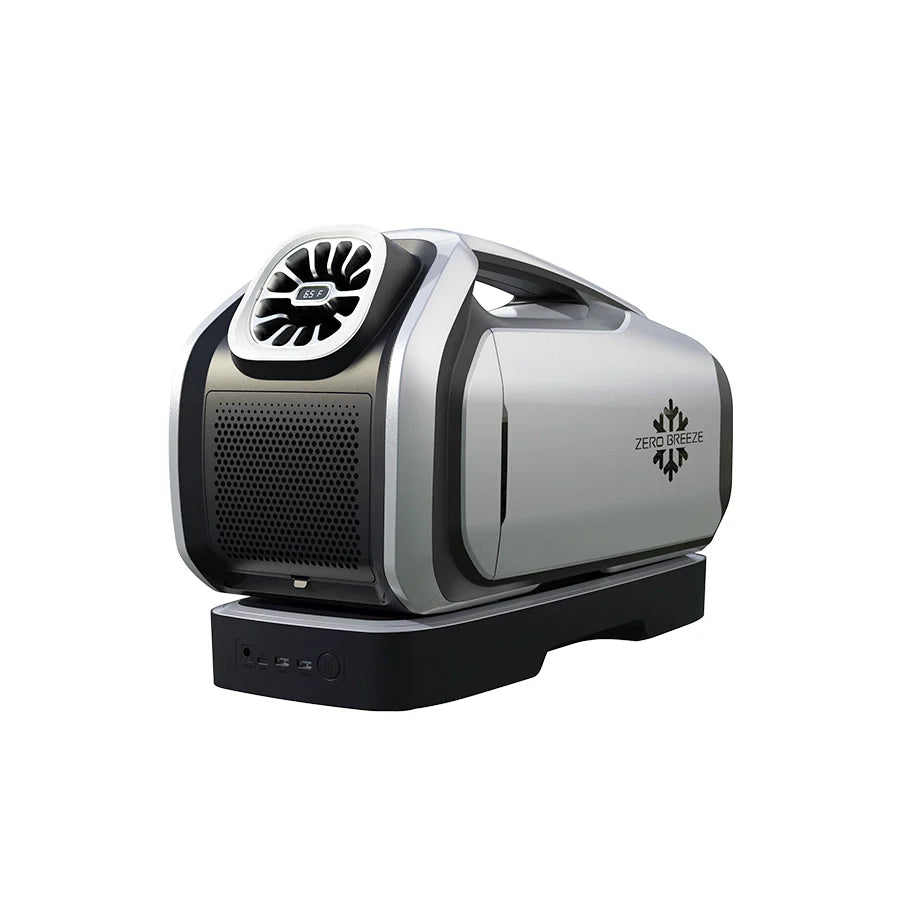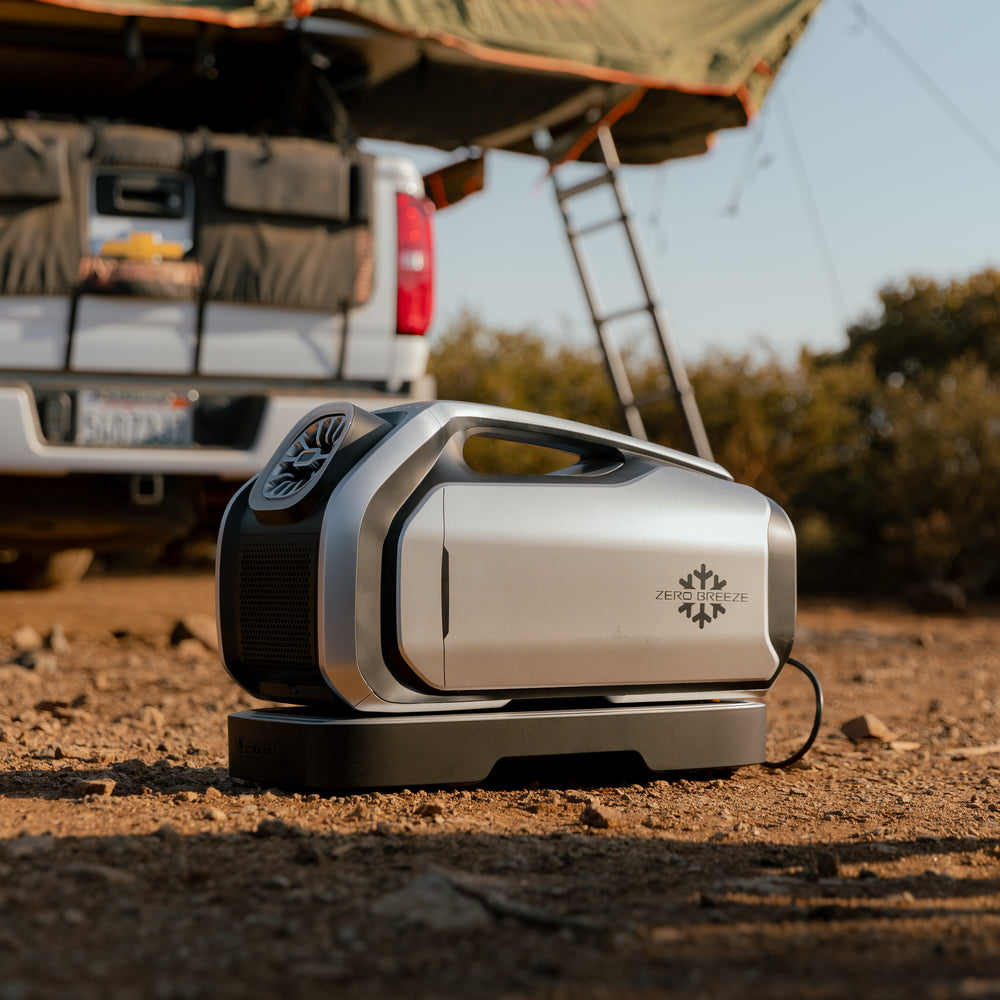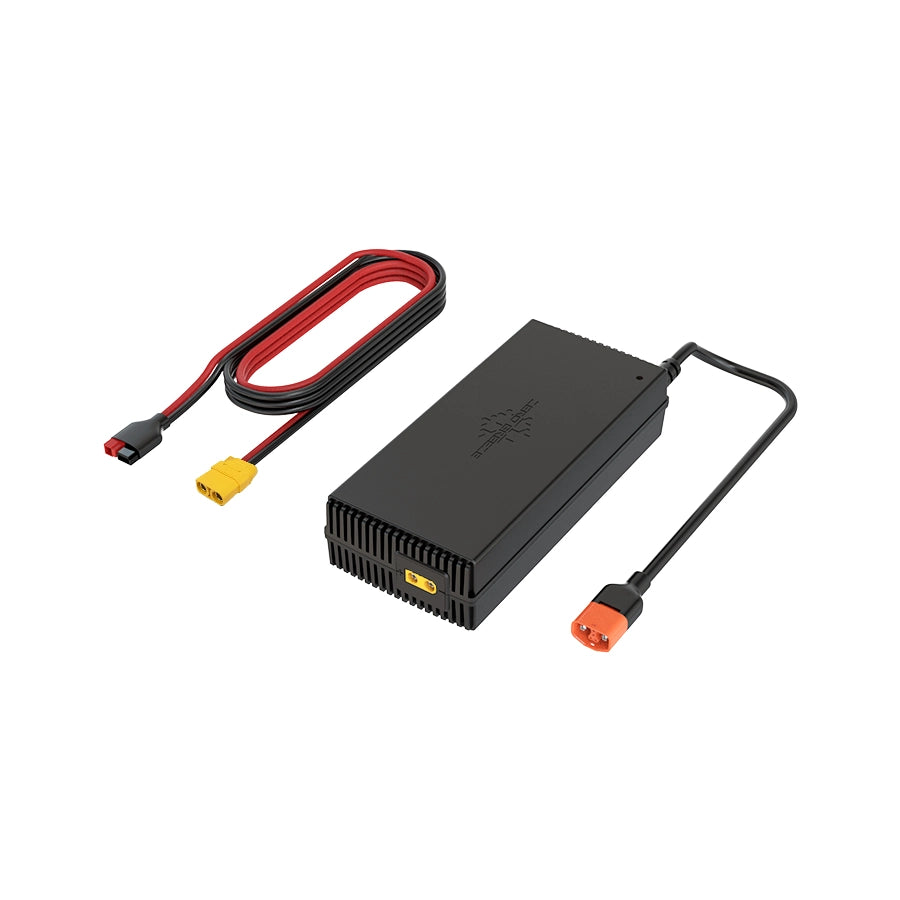Go Green, Go Solar: A Beginner's Guide to Solar Battery Charging

Solar energy is rising, and it isn't just for rooftops and power plants anymore. Portable solar panels and batteries have also surged in popularity, allowing everyone from campers to van lifers to keep their gadgets powered with clean, renewable energy. Solar is an endlessly available source of power as long as the sun shines, producing no harmful gas emissions. Just imagine—the sunlight hitting Earth in only 90 minutes could meet global energy needs for a full year!
In this post, we'll explore how to charge a battery using solar panels, covering everything from how solar panels work to choosing the right components, setting up your system, and a real-life example with the ZERO BREEZE Mark 3 battery. Let's dive in!
How Solar Panels Work When Charging a Battery
Solar panels harness sunlight to generate electricity through a process called the photovoltaic effect. Solar cells, the building blocks of solar panels, absorb photons from sunlight. These photons excite electrons in the solar cells, creating a flow of direct current (DC) electricity.
This electricity is then sent to a charge controller, which regulates the voltage and current to ensure safe and efficient charging of the battery. The charge controller protects the battery from overcharging and undercharging, maximizing its lifespan and minimizing safety risks.
Charging Batteries with Solar Panels: The Basics
However, solar panels can't store electricity—they only produce it while the sun's rising and shining. That's where batteries come in, storing the excess electrical energy for cloudy days or nighttime use, even for emergency use, such as power outage. By charging batteries with solar panels, you maximize your solar power energy usage, reduce dependency on the grid, and cut down on electric bills. Here's what you'll need:
- Solar Panel: This is the engine converting sunlight into DC electricity.
- Charge controller: As sunlight fluctuates and the voltage of solar panels are typically higher than the battery, this device is designed to regulate the voltage and current from the solar panels, ensuring that your battery is charged safely and efficiently without the risk of overcharging.
- Rechargeable battery: This stores the DC electricity generated by the panels for later use, and a rechargeable one is ideal for long-term use.
Choosing the Right Solar Panel
Solar panels come in three main types: monocrystalline, polycrystalline, and thin-film and they vary in the following three aspects:
- Efficiency
Efficiency is a crucial factor in solar panel performance. It measures how well a panel converts sunlight into electricity. Simply put, higher efficiency means more electricity generated from the same amount of sunlight. Monocrystalline solar panels, made from pure silicon, are the most efficient, typically ranging from 17% to 22%. Polycrystalline solar panels are less efficient, usually between 15% and 17%, as they are made from silicon fragments (don't let the name fool you). Thin-film panels are the least efficient with a range from 7% to 14%. To maximize efficiency, solar panels should be positioned to receive as much direct sunlight as possible.
- Cost
Cost is another key factor to consider. Monocrystalline solar panels, while offering the highest efficiency, are also the most expensive due to their complex manufacturing process. Polycrystalline solar panels provide a balance between cost and efficiency, with a narrowing price gap (around $0.05 per watt today) compared to monocrystalline panels, according to the Lawrence Berkeley National Laboratory. Thin-film solar panels are the most affordable option due to their simpler manufacturing process and use of alternative materials like amorphous silicon (a-Si). However, they tend to degrade faster than crystalline solar panels, leading to higher long-term costs.
- Lifespan
Solar panels' lifespan also matters. According to the American Solar Energy Society, monocrystalline solar panels typically last 25–40 years while polycrystalline solar panels last 20–35 years. Thin-film solar panels, however, have a shorter lifespan of 10–20 years. While reputable manufacturers often offer 25-year warranties, solar panels can still generate electricity beyond this point, but at a reduced capacity. As for the optimal replacement time, it depends on individual needs and the specific panel's performance decline.
Choosing the Right Charge Controller
Solar panels cannot control the power they produce internally and won't stop working even if batteries are full. Sitting between solar panels and batteries, the charge controller serves as a valve to control the voltage and current between them. It not only improves charging efficiency but also protects batteries from damage. There are two main types of solar charge controllers on the market.
- PWM (Pulse Width Modulation)
These controllers are simple and cost-effective, but they're best suited for smaller solar systems where solar panels have a voltage similar to the battery. They can waste a lot of potential charging opportunities if panel output fluctuates, as they aren't great at adjusting to sudden voltage changes. Instead, they will stop charging for battery protection. This makes PWM controllers less efficient. For this reason, PWM controllers are better for systems with panels wired in parallel.
- MPPT (Maximum Power Point Tracking)
Far more efficient, MPPT controllers actively track the optimal power point of the solar panels, converting excess voltage into usable current, which helps charge the battery faster and more efficiently. This makes them ideal for larger setups where solar panel voltage is higher than battery voltage, which is nearly always the case, and they work well in varying weather conditions. Although pricier, MPPT controllers can be up to 30% more efficient than PWM options.
When choosing between the two, you should also consider other factors, such as the size of your solar system, the equipment quality, and the required efficiency.
Choosing the Right Rechargeable Battery
Your battery choice impacts your system's capacity, durability, and portability. Here are three common options:
- Lead-Acid Batteries
Featuring well-established technologies, these batteries are highly affordable and recyclable. However, they suffer from low energy density, making them heavy and bulky. They also require regular maintenance and have a limited sevice life. Additionally, they're less tolerant of extreme temperatures. With a low Depth of Discharge (DoD)* of around 50%, they can only be discharged to half their capacity before needing a recharge.
*Depth of Discharge (DoD): the percentage to which a battery can be safely used before it needs to be recharged, related to its total capacity.
- Lithium-Ion Batteries (Li-Ion)
These batteries are widely used for home solar storage. They're lightweight, compact, and long-lasting, making them ideal for portable devices and solar power systems where space is limited. They require minimal maintenance and offer higher energy density and a DoD of over 80%. However, they are more costly and can pose safety risks of thermal runaway if not handled properly.
- Lithium Iron Phosphate Batteries (LiFePO4)
A type of lithium-ion battery, they also have light weight, compact size, long lifespan and high energy density. However, these batteries feature great improvements. With a DoD of up to 100% and a long cycle life, they can be fully discharged without damaging performance, making them ideal for solar setups. Moreover, they support fast charging, which is perfect for quick recharging of portable devices and solar power systems. Additionally, these batteries are safer with a low risk of thermal runaway. While they may be the most expensive option, they are cost-effective in the long run due to their long cycle life and high energy density.
Setting Up Your Solar Charging System
Now that you've got your components, it's time to put everything together. Here are some tips:
- Placement of Solar Panels
To maximize solar energy production, position your panels in a spot with maximum sunlight exposure. Tilting the panels to follow the sun's path throughout the day can further improve efficiency.

- Connection of Components
Connect the charge controller to the battery and to the solar panels one by one. The charge controller regulates the voltage and current to ensure efficient and safe flow of energy from the panels to the battery.
- Wiring of Components
If using multiple panels, you have two wiring options basically: wiring in parallel or in series, which affects the current and voltage. Choose the configuration based on your system needs and always use compatible connectors and wires to ensure safe charging.
Charge ZERO BREEZE Mark 3 Battery with ZERO BREEZE 100W Solar Panel
To illustrate how this all comes together, let's look at how to charge the ZERO BREEZE Mark 3 battery using the ZERO BREEZE 100W solar panel. The ZERO BREEZE Mark 3 battery is a great portable option that's solar-ready, serving as a mini power station for your electronic devices when you're camping off-grid.
Wait, where is the charge controller? No worries. The Mark 3 battery is equipped with a built-in MPPT charge controller. It automatically regulates power input, saving you the hassle of finding a compatible controller. This 1036Wh battery has versatile charging ports, including Type-C, USB-A, and 12V Anderson charging port, and supports pass-through charging, so you can charge your devices and the battery at the same time. It's compact and portable, perfect for outdoor explorations.
The ZERO BREEZE 100W solar panel is a flexible, high-efficiency option made with monocrystalline cells, offering a high conversion rate of 24.5%. Its portable design, featuring a reliable TPE handle and an adjustable kickstand, makes it ideal for your adventures. Its MC4 connector ensures compatibility with a wide range of solar generators. In addition, its ETFE-coated surface provides excellent corrosion resistance and durability in various weather conditions.
Next, we'll start charging the ZERO BREEZE Mark 3 battery with the ZERO BREEZE 100W solar panel in two ways: using one panel or two panels.
- One Panel Setup:
Connect the solar panel to the charging cable, then plug it into the Mark 3 battery.
- Two Panels in Series or Parallel:
Use series wiring for higher output or parallel wiring for greater stability. Just ensure the combined voltage doesn't exceed the Mark 3 battery's input limit.
For more information about how to charge the ZERO BREEZE Mark 3 battery, please refer to: 5 Simple Ways to Charge ZERO BREEZE Mark 3 Battery.

Final Thoughts
Charging a battery with solar panels seems complex, but with the right components and setup, it's incredibly rewarding and sustainable. Whether you're camping, traveling in an RV, or just looking for an off-grid solution, setting up a solar-powered battery system is an investment in clean, renewable energy. So grab your panels, connect your battery, and let the sun fuel your adventures!
Ready to go solar? If you have any questions or need more information, don't hesitate to drop a comment below. We're here to help you make the most of this brilliant technology!










Leave a comment